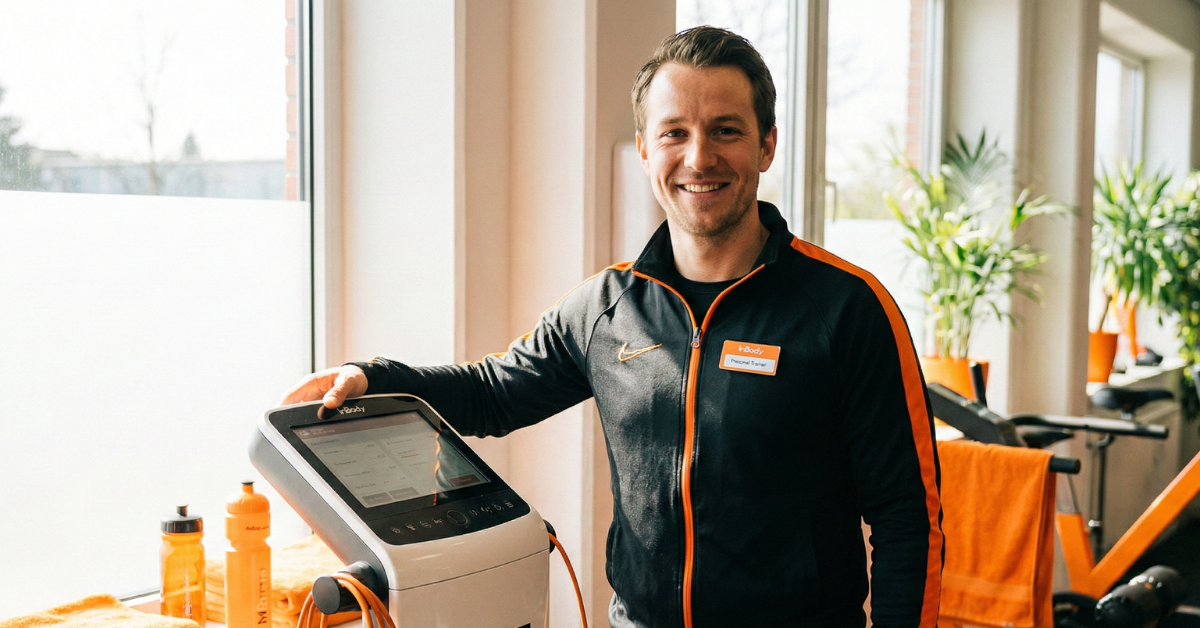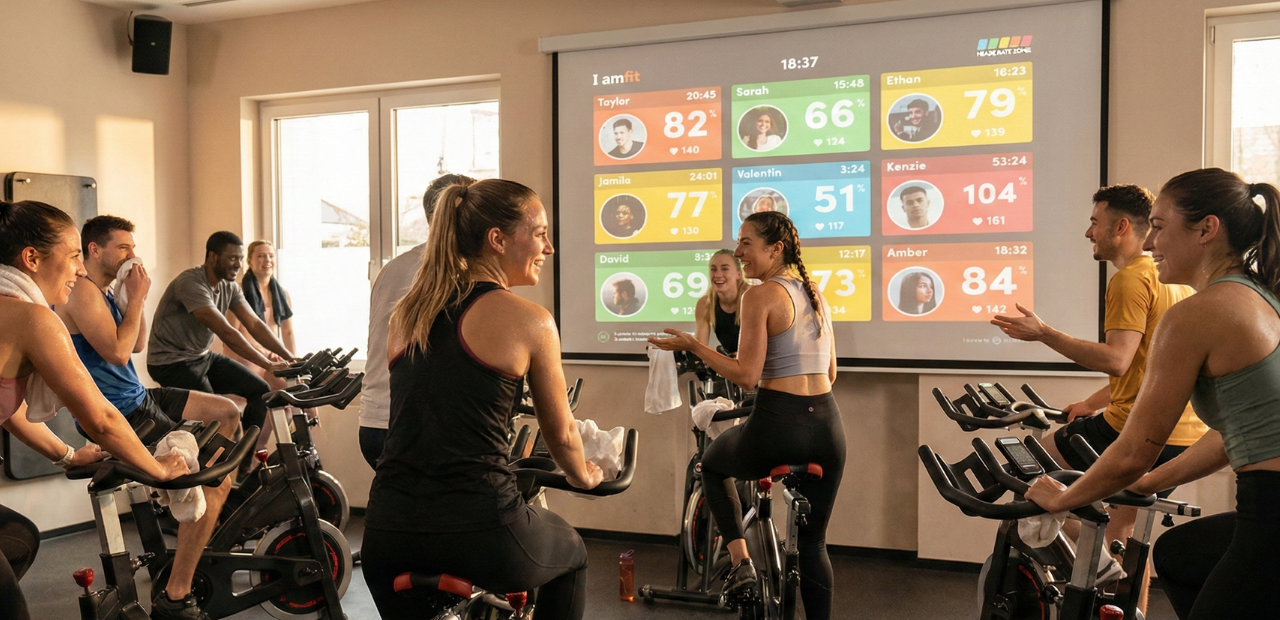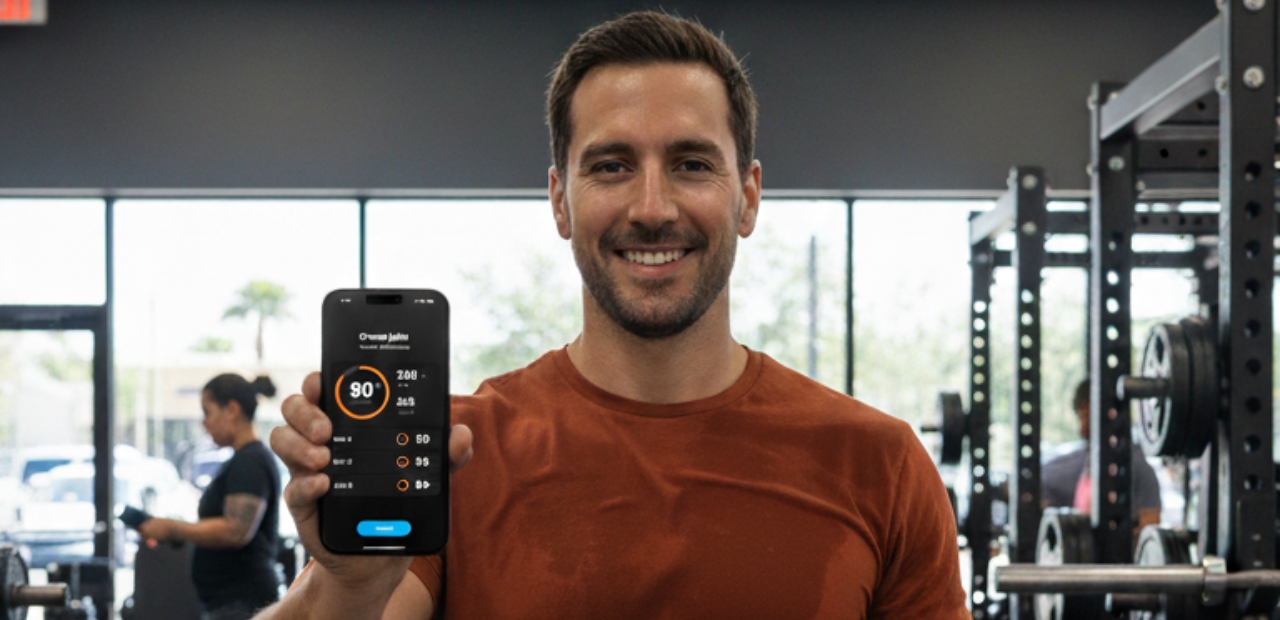Let’s be clear: Body composition scans used to be a gimmick. A nice-to-have. A check-in tool for the occasional transformation challenge. But that era is over.
Today, the gym operators making a real impact are using body composition data as one of their biggest strategic levers - not just to impress members, but to deeply engage them, retain them longer, and drive real measurable business results.
Why? Because it speaks to what modern members actually care about: progress that makes sense, health that feels real, and results they can see — not just guess.
Today’s members are smarter, more curious, and far more health-driven. They’re done with BMI charts and vague check-ins. They want clarity. And that’s where body composition scans became essential.
But that shift didn’t happen overnight nor by accident.
It’s been led by experts like Simon Wilkinson, European Fitness Lead at Tanita, who’s helped gyms across Europe rethink how they use data to create better member outcomes.
“The future of fitness is wellness. And body composition is one of the most personal pieces of equipment in the gym.” Simon said to us when asked.
That quote says everything: the rules have changed.
Today’s members aren’t just looking for weight loss. They want clarity, context and health insights they can trust.
This blog breaks down exactly how to use body composition scans to build trust, tailor your services, and deliver the kind of high-value gym experience that keeps members loyal — and coming back.
1. Make Body Composition a Strategic Experience, Not a Floor Gadget

Leaving a body composition scale in the corner of your gym doesn’t create value — it creates confusion.
The only people who benefit are already motivated and already knowledgeable. Everyone else uses it once, gets puzzled or discouraged by the results, and avoids it forever.
Simon Wilkinson puts it plainly:
“If your body scan is just sitting in the corner of your gym, it’s not adding value. It’s collecting dust.”
To turn that data into real impact, your gym needs a clear “why.”
Members should know what the scan is for, how it ties to their personal goals, and what happens next.
That’s when a scan stops being a novelty — and starts becoming a structured part of the journey:
- Onboarding scan: Make a strong first impression and set a benchmark.
- Mid-program check-in: Keep members motivated, highlight wins, and adjust plans.
- Progress review: Celebrate growth and open doors to new services or coaching.
These scan touchpoints create rhythm. They fuel meaningful conversations between members and staff — not just generic check-ins, but goal-based, personalized dialogue.
That’s how you build trust, increase perceived value, and turn one-time joiners into long-term members.
2. Personalized Body Scan Results Drive Higher Member Retention

The same body composition scan can mean entirely different things depending on who’s looking at it.
- A client trying to lose weight? They care about fat vs muscle.
- A 55-year-old? They’re thinking about mobility and long-term strength.
- A semi-pro athlete? They’re watching balance, recovery, and performance.
If you treat everyone the same, you lose relevance fast. And yet, many gyms fall into the one-size-fits-all trap. They give the same explanation to everyone and members either tune out or lose trust.
And he’s right. Most people aren’t looking for a full-blown analysis, they want simple, actionable insights that connect with them and their reason for training.
Here’s what to to personalise effectively:
- Start with their “why”: Why are they here? Weight loss, injury prevention, aesthetics, longevity?
- Pick the right data points: Tailor the conversation. Use only the metrics that actually support and align with their goal
- Frame the scan as a check-in, not a test. It’s there to guide, not judge
- Adapt the tone. Be direct with athletes, more supportive with beginners
- Translate the scan into a next step. Something they can act on
That’s how the scan becomes something members own, not something they just glance at.
This isn’t just good service, it’s good retention. Members stick around when they feel seen, understood, and supported with insights that actually match their priorities.
Personalisation isn’t about more data. It’s about the right message for the right person at the right time.
Ready to make body scans a growth lever? Book a short call with a body composition expert and get a simple, tailored rollout plan for your gym.
3. Go Beyond Body Fat: Focus on the Metrics That Truly Matter

Body fat still gets people in the door, but it’s only part of the picture. And if that’s all your gym talks about, you’re leaving massive value (and insight) on the table.
Modern body composition devices give you more. And the smartest gyms use that data to go deeper into what members actually care about: health, performance, and longevity.
Here are three categories that resonate across all member types:
Body Fat
Yes, it’s still the most relatable metric. But fat loss alone doesn’t tell the full story, especially for beginners or women gaining lean mass.
When you track body fat alongside muscle, it reframes success beyond just the number on the scale and it helps members understand it, and stay motivated when the weight doesn’t drop.
Muscle Mass
This one’s a game-changer for retention.
Teach members about sarcopenia the age-related decline in muscle that starts earlier than most think and suddenly your message shifts from “look better” to “live better.”
As body composition expert Simon Wilkinson often highlights, sarcopenia is one of the most important data points gyms can use to create long-term impact.
Most members don’t realize how early muscle loss can begin. But when you explain that staying strong isn’t just about fitness, it’s about staying independent and active as you age, the conversation shifts.
For younger members, muscle still connects to strength, tone, and performance.
But for older adults, it becomes about moving with confidence, preventing injury, and enjoying life longer. It’s a message that resonates and motivates.
You can even build smart programming around it: offer “Stay Strong Over 50” packages focused on muscle maintenance, design beginner-friendly strength plans that track visible progress, or support PT clients with deeper muscle insights to keep them engaged beyond aesthetics.
Hydration
Total body water is one of the most overlooked metrics and one of the easiest wins.
Members understand hydration. They can act on it. And when you go further, showing intra vs extracellular ratios, you open the door to discussions about recovery, inflammation, and general wellbeing.
It gives members something they instantly understand and can improve quickly. It’s practical, non-intimidating, and creates momentum.
This builds trust and early buy-in.
In Simon’s words:
“These aren’t just numbers. They’re openings to conversations, coaching, and value far beyond the workout.”
These metrics don’t just educate. They unlock new offers: coaching, check-ins, workshops, even tiered memberships based on wellness goals.
That’s where the real business growth happens.
4. Build Tiered Experiences That Match Different Member Types
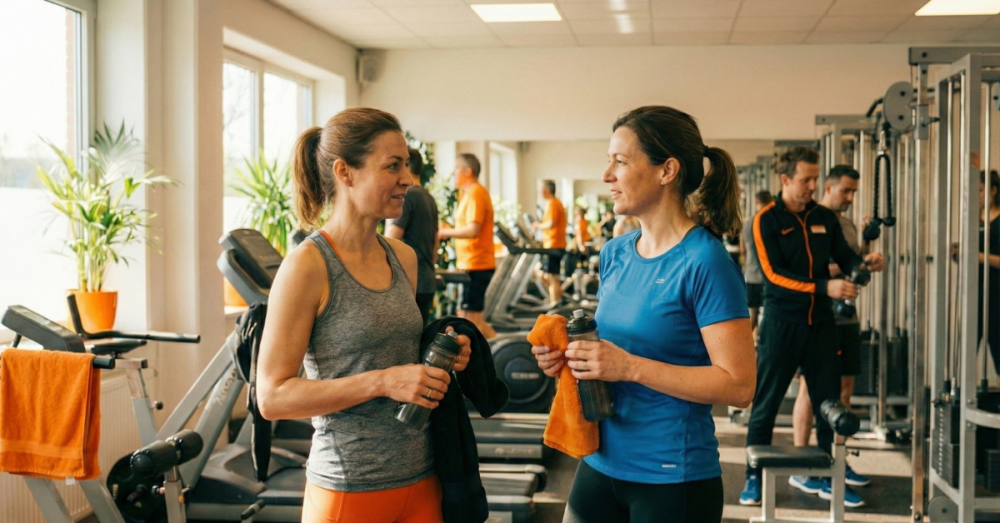
Some members want speed and independence. Others want guidance and personal attention. Most? They want both, but at different stages.
The winning gyms don’t pick one path. They offer tiered experiences that flex with member needs:
- Self-service scans for time-pressed, independent or tech-savvy members who just want to check in quickly.
- Guided assessments for those who value personal advice and need help understanding their results.
- Program-based tracking integrated into challenges, coaching clients, onboarding processes, or health-focused memberships, ideal for ongoing engagement.
This approach delivers what every gym should aim for: Flexibility
High-touch where it matters. Low-touch where it’s efficient.
No gym should choose between technology and human impact.— the key relies in combining both:
- Automation brings convenience, scale and speed
- Coaches bring context and trust
This is the perfect blend that turns data into genuine behaviour change.
5. Segment Strategically: One Message Won’t Move Everyone
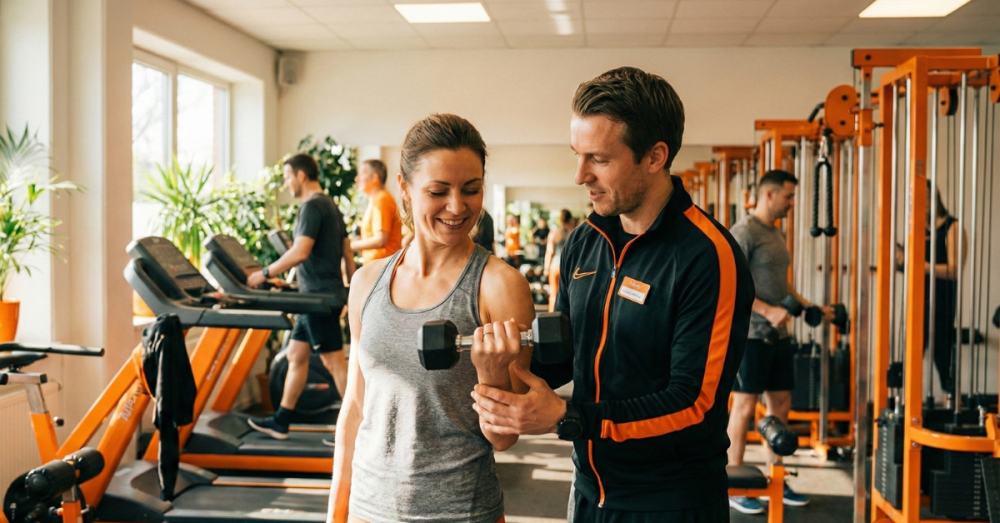
Personalization happens on the gym floor. Segmentation happens at the strategic level.
If you send the same message to every member (in your app , your email campaigns , your offers…) most will ignore it. But when you speak to member groups based on age, goals, or lifestyle, suddenly your message hits home.
Here’s how smart operators apply it:
Older adults (50+)
Launch targeted offers like “Strong for Life” or mobility-based training. Focus email and in-app messages on muscle preservation, balance, and longevity — not HIIT or aesthetics.
Young, aesthetic-driven members
Promote features like symmetry tracking or body transformation programs. Use scan insights to drive leaderboard challenges or progressive strength goals.
Lifestyle and wellbeing members
These are not hardcore lifters. They care about energy, hydration, stress, and feeling better. Tailor communication to holistic health, quick wins, and low-barrier check-ins.
Performance-driven or athlete segments
Push advanced metrics like asymmetries or muscle quality. Offer recovery-focused content, deep coaching sessions, or high-tier memberships.
If you know your member types, you can guide them better — not just in training, but in how you speak to them.
If your messaging doesn’t align with the member mindset, you lose their attention.
Segmentation is how you scale personal relevance. When a member feels like “this was made for me,” and the data speaks to their reality, engagement becomes natural.
And guess what? Retention too.
This is where body composition data becomes a marketing asset — not just a coaching tool. It helps you position services, price tiers, and programs in a way that feels hyper-relevant to each group.
That’s how you turn insight into action
6. Turn Scans Into a Core Part of Onboarding and Retention

Gyms that make a difference don’t wait until a member joins to show value.
Simon shared how some operators introduce body scans during the initial tour — a simple offer that instantly reframes the gym experience.
It signals: “We care about your health, not just your sign-up.”
And it works. When prospective members see real data and a clear plan forming, it builds trust and consistently allows higher conversions and stronger long-term engagement.
But the real power is in the follow-through.
Here’s how to structure it:
- Onboarding scan: Set the tone with a baseline measurement. Use it to spark a conversation about goals, priorities, and progress planning.
- Midpoint check-in: Reconnect. Celebrate what’s going well. Adjust where needed.
- Progress review: Turn results into next steps — whether that’s a program refresh, PT upsell, or workshop invitation.
Each scan becomes more than a data point. It’s a chance to engage, retain, and re-energize.
This is what Simon calls strategic scanning, not just offering the tool, but building it into the journey in a way that supports members and your business outcomes.
7. Stay Ahead of Technology, But Only When It Fits Your Model

Fitness tech is evolving fast — AI-powered coaching , smart wearables, in-depth biometric tracking, and fully automated wellness assessments are becoming the norm.
But innovation without intention can backfire. Experts agree, the worst move is buying tech just to follow a trend.
Too many gyms fall into the trap of adopting new tech for the sake of appearing modern — only to find it adds complexity without delivering value.
Being forward-thinking doesn’t mean using everything. It means using the right things, the right way.
Before implementing any new tool, ask:
- What does this tech actually do — and is it better than what we already have?
- Does it solve a real problem or enhance a key part of our member journey?
- Can our team use it confidently? Will members understand and use it consistently?
- Does it align with our brand, values, and service model?
If the answer is unclear, the tech tool is probably not a fit.
Do not miss the trends redefining the fitness industry. Read more on our blog to Discover the 2026 fitness trends for studios, gyms & trainers
Technology should simplify, not complicate. It should speed up admin tasks, deepen insight, or enhance coaching — never replace what makes your service valuable.
The winning formula is hybrid:
- Use automation where it increases speed or convenience.
- Use human touch where trust, motivation, and decision-making are involved.
That’s the real difference between a trend and a strategy.
Smart tech integration isn’t about chasing what’s shiny. It’s about chasing what’s relevant for you and your clients.
It’s all about brand alignment, operational clarity, and long-term value.
Curious about what is next in fitness and AI? Check out our latest trend articles and get practical ideas you can use in your gym today.
Final Takeaway
Body composition analysis is no longer just a progress-tracking add-on — it’s a cornerstone of modern gym strategy.
It transforms a basic check-in into a personalized, data-informed experience that speaks to what members truly care about: real progress, better health, and ongoing support.
In a market flooded with options, this is how you stand out.
When implemented strategically, body scans do more than offer insight — they create moments. Moments to connect. Moments to educate. Moments to deliver real value that members remember and talk about.
Used well, they unlock a complete member journey:
- Stronger onboarding that builds trust from day one
- Smarter communication tailored to individual goals
- Continuous progress tracking that keeps members engaged
- Cross-sell opportunities into coaching, nutrition, recovery, and wellness
This isn’t just about hardware. It’s about creating an ecosystem where data empowers your team, deepens relationships, and gives every member a reason to stay.
The gyms that embrace this shift aren’t just keeping up — they’re raising the bar. They’re showing what a truly health-driven, tech-enabled, human-focused fitness experience looks like.
Ready to level up your retention, coaching, and member experience?
Book a demo with Virtuagym and let’s map out how body composition fits into your growth strategy.
